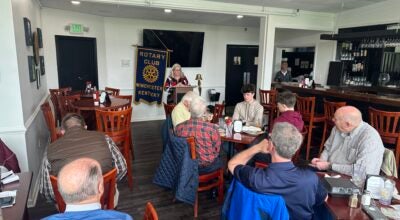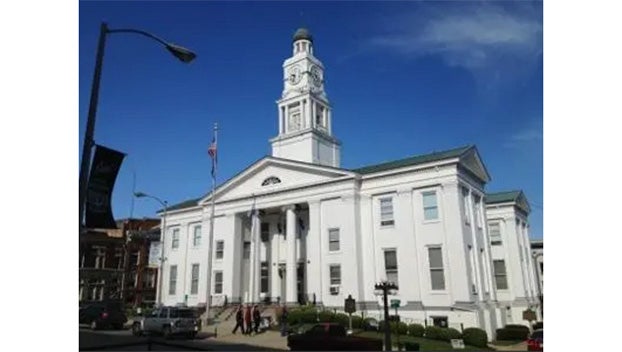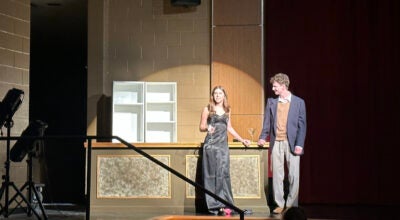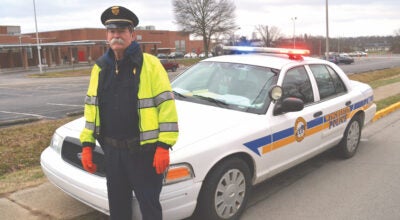Parido suggested replacing Christy
Published 7:30 pm Tuesday, May 11, 2021
|
Getting your Trinity Audio player ready...
|
By RANDY PATRICK
Sun Reporter
A month before the Clark County Board of Education voted not to renew Superintendent Paul Christy’s contract, former board member Gordon Parido suggested to the three who fired him that they find someone else for the job.
In a letter emailed March 15 to Megan Hendricks, Brenda Considine, and Sherry Richardson, Parido shared his concerns about two new construction projects — for building a new Clark County Preschool and a new Phoenix Academy — while there are still “many questions about the future effects that COVID shutdowns may have on our community and schools.”
Although Christy’s contract was not the main emphasis of the letter, toward the end, he wrote: “While never taking a position with me on our current superintendent’s contract, most of you have indicated a concern of him going forward in the district. Is this the person we want leading our future building projects? If we are moving forward with new leadership why not pick a great one and allow them to build on our future.”
In the second paragraph of the letter, Christy apologized for “singling you three members and not including the others, but I look at you as independent thinkers.”
Toward the end of the letter, Parido said he hoped the three know they have his support.
The other two members of the board, who voted against firing Christy, are Ashley Ritchie, the board chair, and William Taulbee, the vice chair.
Hendricks and Considine are new members who were elected last November when Parido and Scott Hisle chose not to run for re-election.
Parido and Hisle often strongly disagreed with Christy and were critical of his leadership. Hisle differed with the superintendent on when and how to reopen the county schools during the coronavirus pandemic. Parido accused the superintendent of not being more inclusive of the school board in decision making, including as part of the advisory board established to gather input on how to respond to the contagion.
Parido was appointed to the board to fill a vacancy in 2015, and both he and Hisle were elected in 2016 but chose not to run again in 2020.
During their last board meetitng, Christy thanked the outgoing members for their service and said that there had been “rough patches” and “differences,” but those differences “challenged us to grow.”
Two days after the Aug. 19 meeting to terminate Christy’s contract, Hisle admitted in a phone interview with the Sun that he had “strongly encouraged” Christy in February to announce his retirement before the board was scheduled to vote on his contract because he had gathered from conversations with Richardson, Considine and Hendricks that the superintendent didn’t have the votes for renewal.
Hisle said he told Christy that he probably did not have the support of a majority and suggested that he “consider announcing his retirement sooner rather than later, thus giving the board ample time to find a replacement.”
The board scheduled a special called meeting Monday night for the “review, discussion and selection of a facilitator for its superintendent search” and for a discussion of the superintendent screening process. However, the meeting happened after the print deadline for this edition of the newspaper.
On the same day Parido sent his email to Richardson, Considine and Hendricks, the board voted to approve its BG-1 documents for the $9.3 million preschool and $1.8 million alternative school. Those documents signal to the Kentucky Department of Education the school district’s intent to build.
During that meeting, Considine, Hendricks and Richardson that night wanted to table the discussion and schedule a work session so they could discuss the plans and become more familiar with them. That was a suggestion Parido had made in his letter earlier that day.
Considine said she also had reservations about building the preschool on Mount Sterling Road.
But Donald Stump, the physical plant manager for the district, said: “If you’re looking at changing your facilties plan, you’re looking at months of delay.” And Randy Brookshire, the architect, said a project like the preschool would take months to redesign.
After the discussion of concerns about the delays, Taulbee, Ritchie and Considine voted to approve the plan for the preschool and Hendricks and Richardson voted no. Taulbee, Ritchie and Considine voted for the alternative school, Richardson voted no and Hendricks abstained.
In his letter, Parido expressed several concerns.
“Has the superintendent ever sat down individually or in a work session to discuss his visions of our district and how a new pre-school or alternative school benefits the goals we have set. I know it did not happen with me on the previous board and he was asked many times to discuss these.”
He contrasted that with the extensive discussions that occurred during the school district’s last building project, when he was principal of George Rogers Clark High School and Considine was principal of an elementary school that was being closed as part of that plan.
In the case of the current project, Parido said, the facilities committee worked independently of the school board and central office and there was no opportunity for the board’s input.
Parido said it’s easy to see that the current alternative school and preschool are in the worst conditions, but said the board has “no idea the issues we could be facing” as a district if and when “we ever return to normal.”
“Will our enrollment increase or decrease?” he speculated, and pointed out that Baker Intermediate School “will be under many constraints with an enrollment increase.”
He asked whether “the current set-up” for the intermediate school and Robert D. Campbell Junior High School were best for the district.
And he said that as a former principal of GRC, he had concerns about locating the alternative school on the campus of the high school.
“Most expulsions and placements that I was involved in as principal and board member involved violence or a threat of violence,” he said. “I’m not sure I (or parents of other students) would want those students returning to the same campus.”
With the development of virtual learning, he wondered, “is there a possibility this program could be run without ‘brick and mortar”.
“Going ahead with the plan may be the best solution, but without a vision all we have is a new building,” Parido wrote.
When the Sun contacted Parido Wednesday about the email, he declined to comment, saying that its publication was “a matter of public record” and that it could “stand for itself.”





